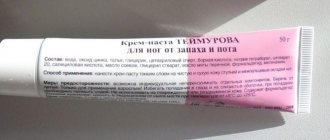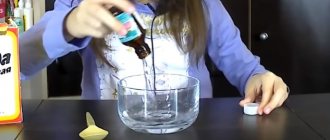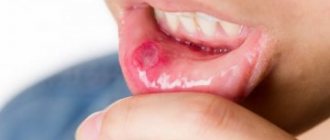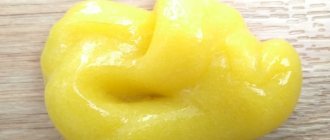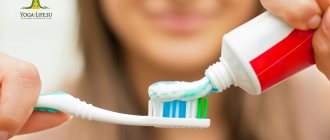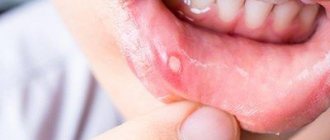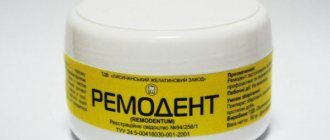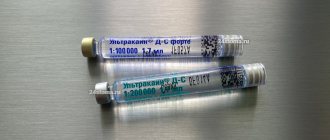Description of the substance
What is borax substance? Many minerals containing sodium tetraborate have been studied. Such deposits include:
- borax or sodium tetraborate tinkal decahydrate;
- kerite;
- Borax sediment is formed during the drying up of salt lakes (Searles, lakes of Turkey);
- minerals belonging to the borate class, containing calcium, sodium and similar elements other than borax.
Varieties of borax
There are two options for this material. In solid form, borax appears as a powder with small granules of a small fraction with a white color. The flux will not spread during application and can be precisely positioned in the required metal-to-metal junction areas.
Diluted borax has also been used for light metals. In some cases, liquids are very convenient, because you just need to dip a small part into the solution. In addition, the liquid form allows the use of borax even at low heating temperatures.
In some cases, it is advantageous to use a mixture of fluxes with borax included in the composition for the special characteristics of the base metal and special requirements for the connection.
Composition and properties
The chemical nomenclature of soldering borax indicates that it is a crystalline hydrate of the sodium salt of tetraboric acid. If the substance contains 10 water molecules, then it is called sodium tetraborate decahydrate. In simple words, it is a salt that is surrounded by a shell containing 10 or 5 water molecules.
A temperature of 64 degrees causes decahydrates to melt and lose water in the process. Borax is dehydrated at a temperature of 380 degrees Celsius. Tetraborate is characterized by withstand heating up to a temperature of 742 degrees and melting when it increases.
Borax contains sodium chlorine, barium chlorine and, in some cases, boric acid. Flux in the form of a solution has a high ability to dissolve metal oxides, as well as fatty films and anything unnecessary that can prevent the adhesion of materials.
Thanks to the use of borax during soldering, many products are produced without defects.
Chemical properties
Anhydrous disodium tetraborate is stable up to 524-527 C (transition phase), melting at a temperature of about 740 C. When dissolved in water, disodium tetraborate (anhydrous, penta- or decahydrate form) is converted into boric acid and borate ions.
In dilute aqueous solutions, there are 2 types depending on the pH: if the pH is less than 7, boric acid is predominantly inseparable; if the pH is greater than 11, metaborate ions predominate, and at a pH of 7 to 11, both species coexist together. In concentrated aqueous solutions, complex ions can additionally form.
Kinds
Based on appearance, welding drills are divided into 2 types.
- Solid. In powder form, flux has the form of solid fine fractions. This shape makes it easy to lay borax on a metal surface before the soldering process, while the substance does not spread. Solid borax is sold in boxes that are sealed, thereby protecting the substance from moisture and the negative influence of the environment. In the powder fraction, borax is white.
- Divorced. This type of borax is considered the most suitable for light metal and its alloy. The substance is the same powdered borax, but dissolved in a liquid. This feature of the flux makes it possible to use it at low soldering temperatures. Using diluted borax is quite simple: small metal elements are dipped into it and then soldered. This flux is popular in jewelry, as well as when working with wires and contacts.
Application
In the last century, the effect of the preservative E285 on the human body was not sufficiently studied.
In this regard, the substance was actively used in the food industry, for example, borax was added to butter and margarine, used in the production of pasta and rice, and some semi-finished products. Now this additive is rarely used in the food industry. This is due to the adverse effects of this chemical on human health. In some countries, E285 is used in strictly limited quantities in the production of red caviar.
If you believe most studies, the food additive E131 does not cause harm to the body, since it is completely eliminated from the body.
Owners of a mini-bakery always face a dilemma: it is better to buy a ready-made set of equipment or each device separately. You will find useful tips in this article.
You will find all the detailed information about the preservative sodium sulfite (E221) here.
Advantages and disadvantages of the product
Let's start with the pros:
- The drug is extremely affordable. The cost of a bottle of borax does not exceed $1, which is several times cheaper than other antiseptics and combination products.
- The drug is non-toxic, well tolerated and does not cause serious side effects.
- The product can be used in problem categories of patients: children, pregnant women, nursing mothers.
- The drug is effective, especially in gynecology. Glycerin has a softening and anti-inflammatory effect, relieving itching and burning, and boric acid helps restore the acidic protective environment of the vagina, stimulating the growth and reproduction of beneficial lactic acid bacteria.
What is sodium tetraborate used for?
Borax is an antiseptic with bacteriostatic activity. In small quantities it is included in household detergents. Builders use it to destroy and prevent mold, and gardeners need sodium tetraborate to control pests.
Borax with glycerin is widely used for rinsing and douching in the treatment of many diseases: stomatitis, upper respiratory tract diseases, thrush, candidiasis. It is used as an external remedy for bedsores, diaper rash, and cracks. The drug is absorbed through the skin or mucous membrane and enters the digestive tract. It is eliminated from the body within a week through the intestines and kidneys. This medicine has contraindications. Due to increased toxicity, it can be harmful, so it is not used for children, pregnant women, nursing mothers and people with hypersensitivity and a tendency to allergies.
Sodium tetraborate is included in many slime recipes as a thickener. It is he who, by changing the properties of other components, gives the “chewing gum for hands” ductility and elasticity. But it is not recommended to give such slimes to children under 3 years of age, because they may be tempted to try chewing gum on their teeth.
[su_youtube url=”https://www.youtube.com/watch?v=Mis8Vh9e2Dc”]
Scope of application of the drill
Sodium tetraborate has been actively used for the following purposes:
- as a flux during soldering and melting of metals;
- in analytical chemistry studies as a standard substance for determining the level of acid in a solution. Borax is also used to establish the characteristics of metal oxides;
- widespread use in the creation of glazes, enamel, glasses for optical instruments and decoration;
- the powder is used in pharmaceuticals and paper production;
- is a natural preservative and means for disinfection and control of parasites;
- is a component in the chemical industry to create household cleaning products;
- relevant application in the creation of cosmetic products;
- borax is used as a base for creating boron;
- the substance is a component for creating insulating building materials;
- in light industry, sodium tetraborate is applied to the product before the painting procedure.
Using a drill in everyday life
Borax can be found in most grocery stores. It is a relatively inexpensive product, making it an excellent choice for many household projects.
Use of sodium tetraborate as a medicine
The substance is very effective in controlling pests: cockroaches, ants and other household insects. The mixture is ready by mixing equal parts of powder with sugar. Sugar helps attract beetles and borax exerts its detrimental effect on the insect. It is recommended to keep the substance in hard-to-reach places, away from pets and children. Optimal places: under stoves, refrigerator and sink. Borax also works well against mice. You just have to apply the powder in the areas where the mice are located, and the borax will rid you of the pests. You can also sprinkle the solution on the carpet and vacuum it to eliminate the presence of fleas or treat the mattress to get rid of bedbugs.
Borax will get rid of rust. Mixing 1 cup of powder with 2 cups of water and 1 tablespoon of lemon juice makes an effective anti-corrosion agent. The paste-like solution is applied to the rusty items for about 15 minutes. After which the rust can be easily removed by mechanical friction.
Sodium tetraborate is a universal cleaner. Two tablespoons of borax are mixed with 2 cups of water to create an all-purpose cleaner. The solution can be applied in a spray bottle and used to clean kitchen surfaces and bathroom tiles and ceramics. Borax is great for removing very stubborn stains. Borax will help remove stubborn stains from the floor.
Borax will allow you to flush your home plumbing fixtures. Simply place ½ cup of borax into the drain with a few cups of warm water. Borax breaks down dirt that gets stuck in pipes. This will not only remove excess and unclog the drain, but also disinfect the system.
Application in forging and forge welding
Borax is actively used as a flux for forging and forge welding. The powder is a source of boron oxide, with excellent antioxidant properties. Borax can, if necessary, remove small cracks during metal processing, change the shape of a product, or when heated during artistic forging and blacksmithing of metal. The substance is classified as a high temperature flux. The processed workpiece with borax is characterized by more wear-resistant characteristics and durability.
Using borax in soldering.
During the melting of borax at a temperature of 700-900 °C, the surface of the material being processed is cleaned, and all excess inclusions are dissolved in the flux. During the processing of a material by forging, a thick layer of scale is gradually created. In some cases, the metal being processed may completely burn due to overheating of the part. But by using a thin layer of borax, this scenario can be avoided.
In industry
Industrial enterprises find the following uses for this substance:
- as a raw material for the production of boric acid;
- as an antiseptic in the production of bulk insulation materials such as “Ecowool”.
- as a means for determining the concentration of acid solutions;
- in welding production as a component of flux;
- in the mechanical engineering industry as a component of antifreeze and various lubricants;
- in glass production;
- the fabric is treated with sodium tetraborate for better dyeing;
- Borax is a component of almost all cosmetic products.
Using borax in the soldering process
In addition to household use, borax is a popular raw material for soldering. High temperature flux is produced as a finely dispersed powder. When heated above 700 degrees Celsius, the flux flows into a liquid state and becomes solder. I’ll tell you about the pros and cons of this flux in the table below.
| Pros of borax flux | Cons of solder |
| The elements being connected do not need to be heated to the same temperature. | After the borax solder cools, salt-type deposits form on the surface of the seam, which will have to be cleaned off from time to time. This is not very convenient for hard-to-reach places. |
| The quality of the roller is high even when connecting different materials. For example, metal and non-metal. | |
| The roller can be destroyed if necessary by reheating the borax to the melting point. | |
| The peak heating temperature of 700+ C will not allow copper parts to warp + the characteristics of the weld with this solder are higher than usual. | Flux absorbs moisture very well. A closed storage container doesn't even help. Too wet solder reduces the quality of the roller several times. |
| Capillary soldering itself is considered the best solution for connecting small and medium-sized parts. | |
| The powder mixture makes it possible to achieve a high level of seam strength. |
To learn how to use Borax without jambs, you need to maintain clear proportions when applying. For beginners in welding, this can be problematic, so gaining practical experience with such solder is extremely important.
Rules for soldering with technical borax:
- The base for applying boron powder must first be cleaned. The welder gets rid of various greasy stains, wax and other debris from the surface of the future seam. For this procedure I use regular sandpaper. It's quite enough.
- The soldering iron tip needs to be preheated before touching the solder.
- To form a reference seam, I advise you to heat the workpieces to the same temperature.
- The tip of the soldering iron should heat both sides of the elements being connected.
- Do not skimp on solder to form a quality connection.
- When the solder begins to flow, the soldering iron tip is temporarily removed from the joint location.
- After applying the bead, the joined elements cannot be moved until they have completely cooled. When working with transistor components, you should use “crocodiles” that will act as heat sinks, thereby reducing the risk of temperature damage to the filling.
If dry joints occur, the roller must be melted and the seam redone. After finishing work with solder, the tip of the soldering iron is cleaned. When working with copper parts, cleaning the edges of the elements being joined is especially important.
What tools and materials are used in the borax soldering process:
- soldering iron Used to heat solder + sometimes for the connections themselves. Sometimes it is more convenient to heat the elements with a gas burner;
- stand. To position the soldering iron while it is heating up or is inactive. There are a lot of variations of stands for this instrument on the Internet, so choosing one that is convenient for you will not be any problem;
- rag or sponge. Consumables needed to clean the soldering iron tip;
- fine grit sandpaper. Used for stripping joints to which solder will be applied;
- crocodiles. The clamps play an auxiliary role as radiators;
- burner. Needed when soldering pipes.
Also, to improve the quality of the seam, I advise you to use boron flux, which will contain fluoride or chloride elements. When soldering pipes, the elements being connected must be heated for at least 25 seconds.
How to make borax with your own hands?
Soldering using borax
Sodium tetraborate is widely used as a flux used in the soldering and forging process of various metals.
Borax itself is useless, but under the influence of high temperatures it turns into boron oxide, which has excellent antioxidant properties. Borax is also capable of:
- fill small cracks in the metal;
- increase wear resistance and durability of the processed part;
- help change the shape of a part during artistic metal forging.
During soldering using flux, oxides are instantly removed from the metal surface, and other substances are dissolved in it. During forging, a layer of scale constantly forms on the surface of the metal. If forging is uncontrolled, it may overheat, which will ruin the product. The use of flux allows you to avoid this.
The process of treating a forged part with flux, which prevents the formation of glow on the product Source Popgun.ru
How is soldering done?
Flux is most often used when soldering using solder - a filler metal that has a relatively low melting point. To work with all common metals: steel, copper, cast iron, etc., a flux is made based on boric acid with a 1:1 ratio. The mixture is thoroughly mixed and then the water is evaporated to obtain a white, dry powder. The use of such flux has a number of advantages:
- materials can be soldered within a wide range of soldering temperature conditions;
- it becomes possible to combine metal with non-metallic materials;
- during operation, the main materials do not melt, but only flux and solder;
- the strength and mechanical properties of the parts being soldered are improved.
Flux based on borax is sold in convenient sealed packages made of special plastic that does not allow water vapor to pass through. Source Bytlux.ru
What is it and what is it for?
Soldering borax is a high-temperature type of powdered flux that is used when joining metal products by soldering. Melting of this substance can occur under the influence of temperatures exceeding 700 degrees Celsius. Soldering borax has its own GOST, according to which it is manufactured and its characteristics are regulated.
The substance in powder form looks very similar to salt, in other words it is called sodium tetraborate. The synthesis of borax occurs naturally, and its extraction is carried out from salt lake deposits.
The use of this substance is quite wide, but most often it is used for soldering copper pipes.
The advantages of using borax include the following:
- the materials that are planned to be processed may have different temperature conditions;
- obtaining a high-quality, reliable weld not only between metals, but also between metal and non-metal surfaces;
- ease of soldering seams if necessary to separate parts;
- when soldering, the parts do not warp or deform;
- increased productivity during capillary soldering;
- obtaining smooth and durable seams even from a craftsman with little experience.
The disadvantages of sodium tetraborate are as follows:
- release of a large volume of salts, which harden on the metal at high speed;
- absorption of moisture from the environment;
- the difficulty of selecting the right amount of borax for an inexperienced welder.
Description and external signs
Borax mineral is an aqueous sodium borate with hydroxyl. It is also popularly known as boric salt. In Asian countries it is called tincal. This substance resembles almost colorless crystals. Origin of the name: from the Arabic word bauraq - translated as “white”. The form of release of borax in pharmacies and hardware stores is a white fine-crystalline powder.
Chemical composition
The components of borax are the sodium salt of boric acid and a strong base (water, sodium). Chemical formula: Na2(B4O5)(OH)4 8H2O
The practical significance of borax is to serve for the extraction of boron.
Molecular weight of the substance: 381.37; Density: 1.7; Specific gravity: 1.69 – 1.8; Maximum birefringence: δ=0.025; IMA classes: borates.
physical characteristics
The color of borax can vary: it can be white with a gray tint, yellowish, less often with a blue or greenish tint. When exposed to light, the crystals are almost colorless. The gloss is matte resinous. The stone looks as if it has been oiled. In terms of hardness, it is a very brittle mineral. Borax is highly soluble in water and forms a slightly alkaline, sweetish solution. Melting point – 60°C; at 320°C the crystals lose water and a white powder is formed.
Composition and physicochemical properties
| Preparative form |
Borax is a compound of soda and boric acid. This substance does not dissolve in alcohols, but forms solutions well with hot water and glycerin.
Molecular structure of sodium tetraborate
Borax reacts with strong acids to form a salt and boric acid. When heated above 400 °C, the substance is completely deprived of water in the crystals. Borax, as a salt of a weak acid, when mixed with water, creates an alkaline reaction with sodium tetraborate. Borax can react with certain metal oxides to form various compounds - borax pearls.
As a food preservative, borax is prohibited for use in most countries, including Russia, due to the inability of the substance to be removed from human organs as a toxic ingredient. As a food additive, the material is called E-285.
Chemical reactions involving borax
Flaws
- After use, a deposit of salts forms, which must be removed mechanically;
- It is necessary to choose storage areas that are free of moisture, since high humidity will cause the flux to deteriorate;
- To prepare the material for use, you need to spend time and choose the right proportion, which can lead to errors.
Varieties of Borax
There are two main varieties that relate to the appearance of the material. The first option is the solid form. Borax soldering flux is supplied in the form of a powder with fine solid fractions. Thanks to this, it is easy to lay it on the metal surface before soldering in the required quantity and it will not spread at the same time. This variety is supplied in a special box that protects the material hermetically from the penetration of moisture and other foreign factors. Fractions are white.
Soldering borax in powder form
The second type, which is more often used for lighter metals and their alloys, is diluted borax. In this case, you are offered the same material, but dissolved in liquid. Due to this, it can be used at lower soldering temperatures. Using this type is also easier, since small parts are simply dipped into the liquid, after which they can be soldered. This is used both in the jewelry industry and in other places where small items are worked. Contacts, wires and other types of equipment come into good contact with dissolved flux. Despite the fact that the principle of using borax for soldering in liquid form is somewhat different from the standard one, they have almost the same effect.
There are also varieties in the form of mixtures, when other fluxes are also used. This is necessary in cases where it is impossible to achieve the desired results using one substance. Proportions and composition depend on specific goals. Most often it is combined with boric acid.
Composition and physicochemical properties
The composition of borax for soldering includes sodium chloride and barium chloride, in some cases boric acid is added to it. It is not used in its pure form for all procedures, since this would require too high a melting point. Drill soldering powder is a high-temperature flux, so its main property is resistance to high temperatures. It is worth noting that the material perfectly retains its chemical properties even at a lower concentration than what is supplied. Thus, the flux solution has a fairly high level of dissolution of the oxides of all base metals for which it is used.
It can also dissolve fatty films and other unnecessary things that will interfere with the normal soldering of the material. Brown soldering protects against many types of defects that can occur in work.
Specifications
There are two main grades of the substance, which are defined according to GOST as grade A and grade B:
Soldering of metals is carried out by first removing traces of oxides from their surface. Fluxes are used for this. They should prevent oxidation when heated and encourage good flow of molten solder.
For soldering copper products, borax solder ideally meets all requirements. The substance has been known since the Middle Ages. It was mined in the lakes of India and Tibet, then transported to Europe, where it was used for processing fabrics and leather, and producing glass.
Borax is widely used for working with metals. When manufacturing or repairing metal products, borax soldering is carried out. First of all, the method is used for parts made of copper and brass. A special type of this flux is used when repairing jewelry.
Side effects
A side effect to the drug can only appear if there is a high sensitivity to the components.
These include:
- Itching
- Weakness
- Possible skin rashes
- Convulsions
- Digestive disorders
- Dermatitis
- Failure of the menstrual cycle
- Abdominal pain
- Cardiopalmus
- Anemia
You should stop using this drug if you experience any side effects and seek immediate medical attention.
Contraindications
- Mechanical damage to the skin and mucous membrane
- Breastfeeding and pregnancy
- Hypersensitivity to individual components of the drug component
- Drug intolerance
Sodium tetraborate (borax solution in glycerin) 20% 30g
A country
Russia
The country of production may vary depending on the batch of goods. Please check with the operator for detailed information when confirming your order.
Active substance
Sodium tetraborate
Compound
Bottle 30 ml Borax (sodium tetraborate) 20 g Excipients: glycerol 80 g.
pharmachologic effect
Antiseptic. Sodium tetraborate has bacteriostatic activity. Effective against candidiasis. Removes the mycelium of the fungus from the mucous membranes, disrupts the process of attachment of the fungus to the mucous membranes and inhibits its reproduction (it is not an antifungal drug, because it does not have a fungicidal or fungistatic effect). As an antimicrobial drug, it is included in combination drugs for the treatment of inflammatory diseases of the upper respiratory tract. Sodium tetraborate has insecticidal properties (class IV in terms of toxicity level).
Indications for use
Candidal lesions of the mucous membrane of the oral cavity, pharynx, upper respiratory tract, urinary tract and genital organs; diaper rash, bedsores.
Mode of application
Sodium tetraborate is used for rinsing, lubricating the skin, and douching 2-3 times a day.
Interaction
You should not practice the simultaneous use of topical antibiotics, as well as those drugs that contain boric acid and phenol. Sodium tetraborate should not be used with hormonal agents. When taken simultaneously with other drugs for external use, allergic manifestations may occur.
Side effect
Local reactions: hyperemia and burning sensation at the site of application. With prolonged use, symptoms of chronic intoxication may develop: From the digestive system: anorexia, gastrointestinal disorders. From the central nervous system: weakness, confusion, seizures. Dermatological reactions: dermatitis, alopecia .Other: menstrual irregularities, anemia.
Contraindications
Hypersensitivity, pregnancy, lactation. Violation of the integrity of the skin (during skin processing).
Overdose
It should be taken into account that when taking the drug orally, the lethal dose for an adult is 10–20 g. In case of an overdose, the following symptoms may be observed: - abdominal pain, diarrhea, vomiting; - headaches, a feeling of general weakness; - loss of consciousness, dehydration; - convulsions, twitching of the muscles of the face or limbs; - damage to the liver and kidneys; - cardiovascular failure. In this case, it is necessary to immediately rinse the stomach and carry out forced diuresis. For severe poisoning, hemodialysis is practiced. Riboflavin is prescribed intravenously, a mononucleotide. Correction of acidosis and water-electrolyte balance is carried out. Also, a solution of sodium bicarbonate, solutions of sodium chloride and glucose, and plasma-substituting solutions are administered intravenously. If the patient complains of pain in the stomach, he is prescribed a solution of platyphylline and atropine, a 1% solution of promedol, and a glucose-novocaine mixture is injected intravenously. Drugs are also prescribed to support normal functioning blood vessels and heart. Read more: https://medside.ru/natriya-tetraborat
special instructions
Can be used together with boric acid as a buffer and antimicrobial agent in eye drops. Not for internal use.
Authenticity
Qualitative reaction. To 5 ml of a 4% solution add 0.1 ml of a 0.1% phenolphthalein solution; the solution turns red. When adding 5 ml of glycerin, the 85% solution should become colorless.
- Qualitative reaction. To 0.2 g of the substance add 1 ml of concentrated sulfuric acid, 3 ml of 96% alcohol and mix. When ignited, the mixture should burn with a green-edged flame.
- Qualitative reaction. A 4% solution should give a characteristic reaction A to sodium (General Pharmacopoeia Monograph “General reactions to authenticity”).
Disadvantages of flux
When working with borax, a characteristic deposit remains on the surface of the base metal, which must be mechanically cleaned off. Borax is susceptible to moisture and should be stored in a dry place. It is necessary to carefully prepare the flux in advance so as not to spoil the product.
Types of soldering flux
Tools and materials
The soldering technology uses a number of components.
- A soldering iron is used to heat joints that are to be soldered. Solder has a lower melting point than the metals that are being joined. Solder melts when heated with a soldering iron.
- Borax acts as a flux to prevent oxidation of the metals that are combined.
- The solder used to join copper pipes has a necessary acid base that is suitable for pipes but is corrosive to electronic connections.
- A stand on which you can hold a hot soldering iron. There are various stands. It is important to always keep the hot soldering iron in place when not in use.
- A sponge or rag that is used to clean the tip of an iron.
- Fine sandpaper used to clean connections before soldering.
- Alligator clips can be used as heat sinks if necessary.
- Burner if pipes are soldered.
Tools for soldering
Thus, the use of borax is effective in domestic conditions for cleaning surfaces and parts, and also as an antiseptic. The ingredient is often used for soldering various parts as protection against oxidation and corrosion prevention. Low cost and widespread use have allowed the substance to be used in many areas of industry and installation services.
Toxicological properties and characteristics
Warm-blooded animals and humans. Sodium tetraborate penetrates the skin and has a mild cumulative effect. Does not have a local irritant effect upon contact with the conjunctiva of the eye and skin, does not cause a sensitization effect or an embryotoxic effect. [2]
People who work with the substance often suffer from chronic eczema. When working, it is necessary to protect the respiratory system, eyes and skin from exposure to dust. [3]
Sodium tetraborate, as well as boric acid and soluble borates, are quickly and almost completely absorbed from the gastrointestinal tract. In the blood, boron is evenly distributed between red blood cells and plasma, but quickly passes into the tissues. Found in soft tissues
10% of the dose (mainly in the brain, liver and adipose tissue). The excretion of boron compounds occurs mainly through the gastrointestinal tract. [3]
Hazard classes. Insecticides based on sodium tetraborate belong to class IV of low-hazard disinfestation agents according to GOST 12.1.007. [2]
Is sodium tetraborate dangerous for children?
Borax is not harmless; it is highly toxic. The human body copes with small amounts that enter the gastrointestinal tract through the skin and mucous membranes. But if you drink even 10 g of sodium tetraborate, it can be fatal.
Contact of sodium tetraborate on the skin or inhalation can cause problems. Therefore, handling salt should be done with rubber or latex gloves in a room with good ventilation. If the salt is in the form of a fine powder, then it is advisable to protect the respiratory tract with a medical or construction mask so that the suspension does not accidentally get on the mucous membrane.
At the end of the work, the surface where the salt was located should be thoroughly rinsed.
Medicines containing salt are intended for external use only. A slight overdose of the drug can cause abdominal pain, headache, vomiting and weakness. In this case, you should immediately perform gastric lavage and consult a doctor. Severe drug poisoning is life-threatening; it is accompanied by convulsions, loss of consciousness, liver and kidney damage, and cardiovascular failure.
The main thing about borax with glycerin
In appearance, borax with glycerin has a transparent 5–20% solution with a slight specific odor.
Sodium tetraborate contains:
- the main substance is borax or sodium tetraborate decahydrate (20 g)
- excipient - glycerol or glycerol (80 g).
Borax with glycerin is available in glass bottles and with a nylon and tightly screwed plastic cap, 30 g each. Borax itself acts as an antiseptic, or rather eliminates various infections, and glycerin removes irritation and helps the borax penetrate skin barriers better. Using glycerin, the solution becomes thick.
Sodium tetraborate price and where to buy it
In the pharmacy, sodium tetraborate is sold without a prescription in the form of a glycerin solution, packaged in dark glass bottles of 30 and 50 ml. The shelf life of the drug is 2 years, the cost varies from 15 to 80 rubles .
Borax powder is sold in hardware and construction departments and in gardening stores in a variety of packages from 20 g to 50 kg. The cost of packaging depends on the manufacturer, weight and degree of purification and varies from 75 rubles/kg to 170 rubles/kg .
Application of brass and copper powder
Practitioners often use flux that has been stored longer than expected. To solder with brass, the borax must be re-melted. The cooled powder should be placed in a jar with an airtight lid. Neglecting this procedure can ruin the work due to waste accumulated during storage.
At the beginning of soldering, the working area must be heated to a clearly visible red color. Heating should begin first at the edges, and then directly at the soldering site.
Then the heated area should be gradually sprinkled with flux, wait until it spreads in the form of a film along the edges of the part. At this point, the heated brass solder must be dipped into the molten borax so that it is covered with a hot flux film.
As experience shows, the soldering area is red in color, while the borax melt is colored bluish. You cannot keep solder in the flux for a very long time. Oxide residues may form.
Then you should warm up the work area again. The brass will take on an orange glowing appearance. You can proceed directly to soldering. If done correctly, the solder will fill all the gaps.
The soldering area will turn golden. When the process is completed, the hot zone should be sprinkled with borax powder and left to cool. Copper parts in a hot (200 ℃) state can be placed in a mixture containing equal parts acetone and water, or simply in water. It makes sense to immerse the cutters in hot sand.
A correctly made connection has a transparent film with a slight blue tint. There are no solder drops on it. If soldering is performed incorrectly, the seam becomes covered with a black porous crust.
The reason may be overheating of the working area, as a result of which slag is formed, or poor quality of borax-based flux. This is how brass and other copper-containing alloys are soldered.
Copper pipe connection
Copper pipelines are expensive. The investment can be justified with careful installation, which is often carried out by capillary soldering using borax as a flux.
It is worth noting that today, other fluxes are sold that are more convenient to use. One pipe is inserted into the second or fitting so that the gap does not exceed 0.4 mm.
Soldering time is short, 3 minutes. It is important that the parts remain stationary during operation. In order for the borax powder to stick to the surface, the copper is first heated with a torch.
For pipes with a diameter of up to 108 mm, the soldering process is carried out at low temperatures not exceeding 450°. The seam is wide (up to 50 mm), but not very strong. Wide pipes with a diameter greater than 159 mm are soldered at high temperatures. Only professionals can perform the procedure.
In both cases, the solder melt penetrates well into the capillaries of the parts, which contributes to the formation of strong connections. It is recommended to remove any remaining borax.
It must be remembered that soldering is accompanied by the formation of smoke, so you can only work in ventilated areas.
Precautions when making slime
Sodium tetraborate is a product that is assigned toxicity class 4. This means that the substance is not toxic, but its molecules can accumulate in the body. Therefore, frequent or prolonged contact with borax leads to undesirable consequences.
Boric acid salts are used to make slimes. They play the role of activators that accelerate the thickening of polysaccharides or polymers. To protect yourself and eliminate skin problems, you need to consider several rules when making a toy:
- When making slime with sodium tetraborate, you need to wear gloves. When mixing borax with other components of the slime, it is necessary to protect the skin from the toxic effects of orthoboric acid crystals.
- It is dangerous to give slimes containing sodium tetraborate to young children. Children under the age of 4-5 years tend to put their hands and small objects in their mouths. Contact of sodium tetraborate with mucous membranes may cause swelling and irritation.
- Slime should be made in a ventilated area. When borax is mixed with water, glycerin and other liquids, harmful fumes are released. To protect the mucous membranes of the nose and throat from irritation, it is advisable to perform the procedure outside or in a well-ventilated area.
It is necessary to avoid contact with the toy if there are any damage to the skin - scratches, ulcers.
To make slime, you cannot use containers in which products will later be stored. If the mixture gets into your eyes, rinse the mucous membrane with running water. If severe watering or redness occurs, contact your eye doctor immediately.
How to make borax at home?
The cost of sodium tetraborate in hardware stores and pharmacies varies from 20 to 100 rubles. If we are talking about a one-time use, then the price is cheap, but if a person constantly needs flux or borax for other tasks, it would be more rational to get it at home. In the table below I will describe 3 popular recipes for making the substance with your own hands.
| № | Components | Packing (g) | Preparation |
| 1. | Baking soda | 50 | Pour boric acid into a glass container and add baking soda in small portions. Stir until completely dissolved. Next, we do filtration - we pass the mixture through special paper or a napkin. You should get about 100 grams of sodium tetraborate. |
| Boric acid | 70 | ||
| 2. | Water | 200 ml | Finely chop the laundry soap using a grater. To start, 1 teaspoon is enough. Pour 200 ml of water into a glass container, add boric acid and gradually add crushed laundry soap. Place the mixture in the microwave for a couple of minutes. We filter and get borax. |
| Boric acid | 5 | ||
| Laundry soap | 50 | ||
| 3. | Powdered borax | 20 | This recipe involves obtaining sodium tetraborate in liquid form. Simply mix borax powder with glycerin and leave for a day. |
| Glycerol | 80 |
Although borax itself is not a highly toxic substance, constant exposure to human skin can lead to dermatitis. If a person, due to his profession, periodically interacts with this inorganic compound, I strongly recommend using gloves, safety glasses and a respirator.
What kind of workwear should a welder have?
This concludes the analysis of the concept of what borax is. I hope that the information provided was of value to you. Share in the comments where exactly you encounter sodium tetraborate in practice. Good luck and good health to you!
What is sodium tetraborate?
Borax is an inorganic compound that has pronounced antiseptic properties. Abroad it is used as a disinfectant. In the domestic pharmaceutical market, a 20% solution of sodium tetraborate in glycerin is more often used. A product with bactericidal and fungicidal action is suitable for the treatment of fungal infections.
Dermatologists warn that sodium tetraborate is dangerous in high concentrations. It has accumulative properties, so with frequent contact with the substance, an overdose is possible. The toxic concentration of borax is 35-40 mg/l of blood. The harmful compound provokes many unwanted reactions:
- skin rash;
- loose stools;
- muscle twitching;
- malaise;
- swelling;
- dermatitis.
Sodium tetraborate appears as a white crystalline powder. It is practically insoluble in alcohols, and aqueous solutions have alkaline properties. The use of highly concentrated liquid leads to skin irritation and burns.
News about the toxicity of homemade slimes is increasingly appearing in the media. Contact of sodium tetraborate with sensitive skin increases the risk of allergic dermatoses.
Sodium tetraborate together with the food additive E412 (guar gum) are the main components of slimes. Thanks to them, the toy acquires the properties of a non-Newtonian fluid, becoming viscous and elastic. But too frequent contact with slime can lead to skin rashes and inflammation.
The shelf life of sodium tetraborate is 2 years at temperatures up to 25°C. It is strictly not recommended to use the product for making slime after this period has expired. If a child accidentally swallows a substance, you need to do a gastric lavage and call a doctor at home.
Stone care
When using borax, you must take precautions: store in a closed container in a dry, dark place, use protective gloves when working and avoid contact with skin and mucous membranes.
Previous article Mineral brookite - properties, deposits and applications Next article Mineral vanadinite - properties, significance of the stone and applications.
Sources
- https://pressadv.ru/samodelkinu/bura-formula.html
- https://stroy-podskazka.ru/pajka/bura/
- https://ArmRinok.ru/obrabotka/bura-v.html
- https://m-strana.ru/articles/bura-formula/
- https://WikiMetall.ru/spravochnik/chto-takoe-bura.html
- https://kamneteka.com/bura-svoystva-znachenie-i-primenenie/
- https://pressadv.ru/stali/bura-tehnicheskaya.html
Precautionary measures
- Instruct personnel about the risks associated with the product, the precautions to be taken and the measures to be taken in the event of an accident.
- Don't eat or drink in the workplace.
- Limit the amount of products in workshops (shops) to the minimum requirements.
- Avoid dust accumulation. Keep premises and work areas immaculately clean.
- Avoid breathing dust or aerosols.
- Provide general ventilation of the premises.
- Avoid contact of the product with skin and eyes. Provide personnel with protective clothing, gloves and safety glasses. These items must be kept in good condition and cleaned after each use.
- It is prohibited to work with tanks containing disodium tetraborate without following safety precautions.
- In case of accidental leakage or spillage, remove the product using a commercial vacuum cleaner. If the spill is large, evacuate personnel.
- Store waste in specially designed containers. Dispose of waste in accordance with approved regulations.
- Avoid exposure of disodium tetraborate to people with chronic respiratory conditions or skin conditions of exposed parts.
